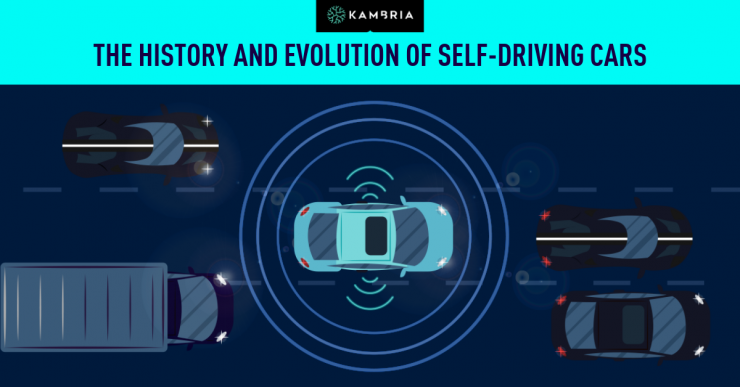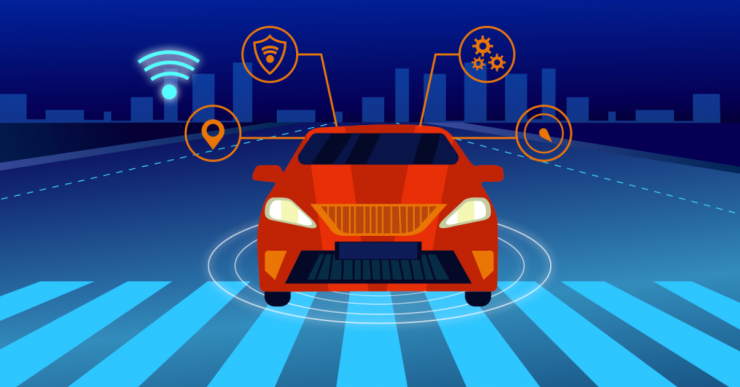
The idea of self-driving cars or autonomous vehicles has captured human imagination since the 1930s and with the 2020 slated deadline to put self-driving cars on the streets of major cities in the US and other developed countries, stakes and motivation are definitely high.
It was at Carnegie Mellon University that the first truly autonomous cars appeared (circa 1980); however, it was DARPA’s (Defense Advanced Research Projects Agency) self-driving cars competition of 2004, 2005 and 2007 that really kick-started the race to create road-worthy autonomous vehicles. DARPA’s challenge to university students and private contractors on developing self-driving cars helped pave the way for a safer and eco-friendly future. This new path is unavoidable and works hand-in-hand to humanity’s destiny.
As early as 2014, Tesla Motors had already implemented its Autopilot technology to its electric vehicles and the safety record it has achieved is astounding, to say the least. The cameras and ultrasonic sensors have successfully predicted collisions with up to 76% accuracy and were able to prevent them with over 90% success rate.
Google, Tesla Motors and several other automobile companies envision a future with reduced traffic problems, fewer road accidents and more efficient public and private transport system starting in 2020. Already Tesla and Google have incorporated basic forms of autonomous car capabilities into their vehicles (with the exception of Google only selling its LIDAR technology to car manufacturers and not manufacturing their own cars as Tesla does) which include automatic braking, parking assistance, steering assistance, dynamic radar cruise control, and other features.
The Autonomous Vehicle Concept
The self-driving car initiative was first realized decades before Google started doing technical research on the subject. The first recorded concept of an autonomous car was introduced in the 1939 New York World’s Fair in the Futurama section. General Motors created the Futurama exhibit as part of its vision of the future of America in 20 years time. Engineers and futurists included an automated highway system on which the self-driving cars would depend on to get people from one place to another.
Of course, it took over 60 years before robotic vehicles started cruising our streets, but they’re not as plentiful as General Motors imagined them to be and they didn’t even need to create the automated highway system. However, the goal to develop full-fledged autonomous vehicles is gaining traction with the goal of making driving efficient and safe.
By 1958 -- almost two decades since they introduced the concept during the World’s Fair in New York -- the self-driving car Norman Bel Geddes’ created for General Motors was finally realized. It relied on magnetized metal spikes embedded in the roadway and was remotely controlled by a device that guided the car by changing the electromagnetic fields in the spikes to keep the car inside its designated lane.
In 1977 the Tsukuba Mechanical Engineering Lab made some improvements to GM’s self-driving car by using cameras linked to a computer, which could guide the car through the road at 20 mph via image data processing.
Ten years later, two of Germany’s leading car manufacturers, Daimler and Mercedes Benz, collaborated on a project called VaMoRs. The VaMoRs was a 5-ton Mercedes Benz van equipped with cameras and other sensors, modified to share data with an on-board computer that allowed it to drive the car unassisted. This technology was a big leap from Japan’s self-driving car, because it could cruise at 56 mph on any road or highway and not collide or crash with other vehicles or objects.
The improvement of the technologies used in self-driving vehicles is directly proportional to how these types of vehicles perform on the road. Better tech means better autonomous cars, but developers were just starting to scratch the surface.
You Can’t Talk About Self-Driving Cars Without Mentioning Elon Musk
The first company that Elon Musk started was Tesla Motors. He intended Tesla to be an all-electric, clean and energy-efficient vehicle manufacturer to kick-start his dream of a green future. The company was incorporated in 2003 and Musk immediately held a press conference stating that he would develop affordable AEVs (autonomous elective vehicles) for the US and the rest of the world in 3 – 5 years time.
The first AEV coupe that Tesla Motors developed was the Tesla Roadster which had a 7,376 ft-lb of torque, can do 0-60 mph in 1.9 seconds and has a top speed of 250+ mph. It can go as far as 620 miles in a single charge and for an AEV released in 2012 with this specs was truly impressive! However, the Roadster cost $200,000 and obviously wasn’t feasible for the masses, but even the subsequent Model S still cost twice as much as the $30,000 Tesla sedan Musk promised.
From 2014 onward Tesla started to include the hardware needed for full self-driving capabilities in all of their vehicles even before the software/data was available, and yet Tesla has the best safety record compared to other auto brands in its class. Plus, Tesla’s Autopilot® feature in their vehicles has 360-degree coverage! Electronic sensors and cameras literally surround the car on every corner and can recognize cars and pedestrians on the road in various distances.
The narrow forward camera has a maximum viewing distance of 250 meters and it is backed up by the secondary camera/sensor, the main forward camera, which can see up to 150 meters. The wide forward camera scans the peripheral vision of the car up to 200 degrees even though it can only see up to 60 meters out into the road. Finally, the rearward looking cameras cover over 180 degrees of the rear of the vehicle and can see up to 100 meters away.
All these cameras and sensors combine to form a fusion of sensors and eyes of the vehicle making Tesla cars almost military-grade, unmanned navigation systems. But as advanced as this technology may seem, Musk said that it isn’t at full self-driving capability yet.
In January of 2019 Musk tweeted that in just 3 – 6 months Tesla motors would slowly depart from the autopilot feature and introduce its first-ever self-driving technology. As early as the year’s end, Tesla car owners would be able to safely drive from Los Angeles to New York City without ever touching the vehicle’s steering wheel. That’s almost 3,000 miles! I will be amazing to see if Musk can deliver on his promise.
But it’s not just Tesla Motors that’s making such promises to the world, in fact, about half of all the car manufacturers in the world intend to produce autonomous vehicles starting 2020 and onwards. So we might see a significant boost in transportation automation in the next decade or so.
Benefits of Self-Driving Vehicles
Just about every country has a government agency that deals with road safety and licensing drivers as well as the registration of vehicles. In the United States, the Department of Motor Vehicles (DMV) manages the issuance of driver’s licenses, registering vehicles, giving out unique plate numbers for traffic monitoring and police surveillance, as well as managing traffic and general road safety for drivers and pedestrians alike. Yet even under the strictest of traffic rules and regulations, there are still over 6 million car accidents that happen in America every year with around 3 million people who suffer injuries related to these accidents, and over 90 people get killed from them on average.
This is where self-driving cars come in handy because scientists predict that they will significantly reduce, if not eradicate, car accidents in the near future.

Here are some of the benefits we can reap from incorporation autonomous vehicles into our everyday lives:
- Fewer Accidents – computers do not feel fatigued, get hungry, nor get distracted while on the road. In fact, they only exist to drive the car and keep both passengers and pedestrians safe. Their cameras and sensors (which will be greatly improved in the future) are state-of-the-art and can detect and track people and vehicles from every angle of the car. They will be able to detect possible collisions and steer the vehicle safely to avoid accidents. It is estimated that accidents will be reduced by 5% per year in the first decade of implementation alone and could go down as much as 0.15% by 2040.
- Decrease or Totally Eliminate Traffic Congestion – the future of autonomous vehicles is to have them communicate with each other, thereby reducing traffic congestion and car accidents even more! Driving to your office 10 – 15 miles away will take less than half the time it before self-driving cars were allowed in the streets.
- Increase Highway Capacity – a recent Columbia University study showed that if there were 100% self-driving cars occupying one lane of a given highway, then vehicle capacity could be increased to as much as 12,000 cars per lane per hour driving at a constant speed of 75 mph. None of our current traffic technology could achieve this feat despite government expenditures reaching several hundred million dollars per annum.
- Lower Fuel Consumption – assuming that all self-driving cars will be hybrid or all-electric, they could save over 2.9 billion gallons of gasoline per year in the US alone! If electricity was also harvested from clean and renewable energy sources, then that would reduce fuel consumption even further.
- Enhanced Human Productivity – riding a bus, train or airplane gives passengers more time to do work and other important things versus driving their own car. Now imagine if half of all vehicles were replaced with self-driving cars? Productivity levels would sharply increase and passengers would be able to accomplish more in the same amount of time.
- Hunting for Car Parking Space Will be Eliminated – self-driving cars would also be able to communicate with parking lots to immediately locate good parking. No more hunting for parking space like the old days which takes at least 5 minutes of circling and wastes precious time.
- Improved Mobility for Children, the Elderly, And the Disabled – there are three types of people who will have trouble driving cars; a) children, b) the elderly, and c) people with disabilities. Some of these folks completely have to rely on themselves as they no longer have any relatives or next of kin. Giving them the option to own self-driving cars will greatly increase their self-reliance and enable them to function more without needing further assistance.
- Elimination of Traffic Enforcement Personnel – human traffic enforcers make errors and statistically make traffic congestion even worse. Self-driving cars will eliminate the need for them, making them available for other good services to society.
- Higher Speed Limits – because self-driving cars will be able to communicate with each other, predict collisions, and adjust the car’s speed and direction in a nanosecond, cars will be able to travel faster. Faster travel times could mean never being late for work, school or an important meeting ever again.
- Lighter, More Versatile Cars – with the efficiency of self-driving cars, soon we won’t need to make cars from metals to reinforce them for safety in case of accident. This is because autonomous vehicles will virtually eliminate road accidents. Therefore, cars will be made from cheaper composite materials, and since they’ll be lighter, they will travel faster and further on a single charge.
Self-driving cars have been in the making for a long time. The good news is that they’re finally here and on the road. Undoubtedly, they will make our transportation safer and more efficient. It’s just a matter of time before we’re all able to text and ride and leave the driving to the car itself.
Ready to Make History?

If you're ready to make history by developing your own applications for self-driving cars using AI virtual assistants, we invite you to join the Vietnam AI Grand Challenge, a government-backed initiative organized by Kambria. The Grand Challenge will bring together Vietnam’s best AI talent and support corporations in Vietnam and globally.
Over 170 team have already registered to compete for their share of $40,000 in prizes. The registration deadline of June 25th is only 2 days away so sign up today!
Hackathon Registration: https://bounty.kambria.io/
Join the discussion group: https://www.facebook.com/groups/VietnamAIGC
Latest updates and events: https://www.facebook.com/VietnamAIGC
For more information: https://www.aigrandchallenge.com/







